
| Publisher: | Abbeville Press | |
| Genre: | Photography, Travel, Regional (see also Travel - Pictorials), Subjects & Themes, Literary, Special Interest, Language Arts & Disciplines, Publishers & Publishing Industry | |
| ISBN: | 9780789215161 | |
| Pub Date: | October 2025 | |
| Price: | $89.95 |
| Gift Books |
by Jean-Yves Mollier, Patricia Sorel
Jean-Yves Mollier and Patricia Sorel's Bookstores of the World is a stunningly illustrated tour of, and tribute to, the bookstore as a cultural and literary institution. Beginning in France (which leads the world in bookstores per capita), the tour continues through Europe and the Americas before stops in the Middle East, Asia, and Australia. French scholars Mollier and Sorel highlight bookstores--iconic, ancient, or otherwise distinctive--in 40 countries, with lavish photos showcasing memorable architecture, unusual locales, and eye-catching interior design. Readers may recognize such giants as Foyles in London and the Strand in Manhattan, but the book also features tiny bookstores set in cottages, courtyards, and even on boats. The text of Bookstores comments on various aspects of bookselling, including book festivals and "book towns"; the financial and cultural challenges of keeping a bookstore afloat; the constant shadow of censorship; and the ingenious ways booksellers of all stripes continue to serve their communities.
Erudite and eye-catching, Bookstores of the World is a treat for armchair travelers and an inspirational list of destinations for any book lover. --Katie Noah Gibson, blogger at Cakes, Tea and Dreams
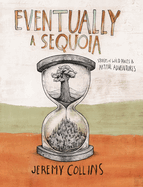
| Publisher: | Mountaineers Books | |
| Genre: | Biography & Autobiography, Travel, Adventure, Adventurers & Explorers, Special Interest | |
| ISBN: | 9781680518054 | |
| Pub Date: | August 2025 | |
| Price: | $29.95 |
| Gift Books |
by Jeremy Collins
Artist Jeremy Collins travels the world with a clear directive: "observe, find a connection, and draw," and the result is Eventually a Sequoia, a beautiful collection of sketches, stories, and encouragement for anyone with a longing to serve others and an urge to create. Pulled from Collins's travel journals, the graphic memoir features detailed line drawings, watercolors, and the occasional photograph to illustrate the mix of handwritten and typed stories. Each chapter highlights a different mission-driven adventure, like paragliding and earthquake relief in Nepal, or floating the Aichilik River as part of preservation efforts in the Arctic National Wildlife Refuge.
The travelogue is visually stunning and thoroughly inspiring as it shares what Collins learned while working with such "giants" as film director Céline Cousteau and founders of the Ancient Forest Society Wendy Baxter and Anthony Ambrose. Not content with merely sharing his art and ideas, Collins asks readers, "What do you care about? What are you concerned about?" before urging them to action: "Pick up your pencil and start there. Every good idea starts with a pencil." --Sara Beth West, freelance reviewer and librarian
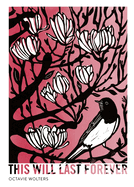
| Publisher: | Pushkin Press | |
| Genre: | Nature & the Environment, Fiction | |
| ISBN: | 9781782695295 | |
| Pub Date: | September 2025 | |
| Price: | $22 |
| Gift Books |
by Octavie Wolters, trans. by Michele Hutchison, illust. by Octavie Wolters
Dutch artist Octavie Wolters creates an awe-invoking meditation with This Will Last Forever, an oversized yet minimalist picture book for adults translated by Michele Hutchison. Printed on thick, matte paper, the book features striking linocuts of birds on the right-hand pages (mostly with black, white, and primary colors), and a seasonal musing or memory on the left. The book progresses through each month of the year this way. The contemplative writing, reminiscent of Mary Oliver's, evokes the beauty and simplicity of nature, and includes an encounter or observation of the creatures Wolters captures in her art. For instance, in October's section, she writes, "The field looks woolly in the low sun, the edge of the forest still dark, the hill soft and undulating." And after an imagined conversation with a bird, she writes, "We stand there for a while, the magpie in the tree and me. The sun is creeping toward its highest point for the day, the dew has evaporated, the gold has migrated to the forest edge." --Nina Semczuk, writer, editor, and illustrator
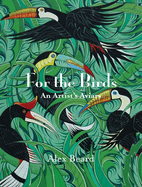
| Publisher: | G Editions | |
| Genre: | Nature, Art, Animals, Environmental Conservation & Protection, Birds, General, Subjects & Themes, Plants & Animals | |
| ISBN: | 9781943876662 | |
| Pub Date: | October 2025 | |
| Price: | $65 |
| Gift Books |
by Alex Beard
In For the Birds: An Artist's Aviary, artist and conservationist Alex Beard celebrates birds around the world and how "birds are there to remind us of the natural world, to pique our curiosity, and free us from the mundane." While his paintings are as varied as the birds they depict, Beard uses distinctive techniques throughout--bold swirls and strokes to form the attachment point of a tucked wing on a goldfinch and the plumage spreading from the neck of a colorful nicobar pigeon. Birds are grouped ornithologically and artistically, and each section opens with a simple poem, like one about the company of a woodpecker on a forest walk. Illustrations presented against a stark background are interspersed with two-page spreads and nods to Beard's artistic process--such as swatches of color above a half-page confusion of guinea fowl, and a brief meditation on loons that ties memories of childhood summers to Beard's travels as an adult. This vibrant collection is full of life and movement, and is a true celebration of the world's avian inhabitants. --Kristen Coates, editor and freelance reviewer
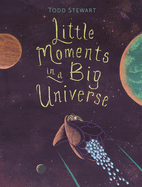
| Publisher: | Owlkids | |
| Genre: | Space Exploration, Social Themes, New Experience, Juvenile Fiction, Action & Adventure, Robots, Science Fiction | |
| ISBN: | 9781771475907 | |
| Pub Date: | October 2025 | |
| Price: | $19.95 |
| Gift Books |
by Todd Stewart
Although the intended audience may be children, discerning, dreamy adults, too, will undoubtedly appreciate the thought-provoking layers in Canadian author/illustrator Todd Stewart's Little Moments in a Big Universe. A space explorer "in search of adventure" and a "smart and reliable" robot crash-land on an unknown planet. The explorer is understandably "weak with fear," while the robot soon realizes they're "the strange creatures here." The planet's inhabitants, however, are welcoming and helpful, ready to "share [their] stories" while the spaceship is repaired. After clean-up and celebrations, the spaceship and crew return to the sky. "I witness and understand," the universe beholds.
Stewart writes from multiple perspectives, the many "I"s belonging to all the elements touched by the explorer's journey: the robot, spaceship, forest, planet, solar system, galaxy, universe. When contact is made with the planet's people, the "I"s become an inclusive "We," acknowledging and honoring connection between locals and visitors. Seamlessly blending familiar planetary space-scapes with surreally inventive creatures, Stewart's technicolor images invite sharp eyes to appreciate the diverse details of fantastic landscapes and otherworldly explorations. --Terry Hong
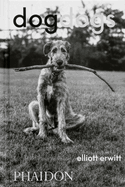
| Publisher: | Phaidon Press | |
| Genre: | Photography, Pets, Dogs, General, Subjects & Themes, Breeds, Plants & Animals, Collections, Catalogs, Exhibitions | |
| ISBN: | 9781838669256 | |
| Pub Date: | March 2025 | |
| Price: | $29.95 |
| Gift Books |
by Elliott Erwitt
Dogs offer unconditional love and support, and they work with first responders. They also make us smile, as do the 500 charming photos by renowned photographer Elliott Erwitt collected in DogDogs, which also includes a topical essay by the late author P.G. Wodehouse.
First published in 1998, this reissue depicts the humorous side of dogs as they're just being themselves. Erwitt showcases the universal love of dogs with black-and-white photographs taken throughout the U.S., France, Switzerland, and elsewhere. The portraits are varied--of dogs by themselves, with other canines, at dog shows, sleeping, wearing hats, on beaches, within cityscapes, or just being cute. Other photos feature dogs with people, as the pets sit, beg, stare adoringly, or play. Erwitt also includes a couple of sad photos, such as one of a pregnant female, head down, walking alone.
Erwitt says, "I don't know of any other animals closer to us in qualities of heart, sentiment and loyalty," and he captures those qualities fantastically in these lovely photographs. --Oline H. Cogdill, freelance reviewer
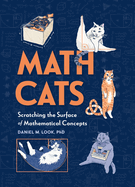
| Publisher: | Running Press | |
| Genre: | Pets, Cats, Animals, Reference, General, Mathematics, Topic, Humor | |
| ISBN: | 9798894140001 | |
| Pub Date: | October 2025 | |
| Price: | $20 |
| Gift Books |
by Daniel M. Look, illust. by Johanna Breu
From the "Purrthagorean Theorem" (Triangles) to "Loafing Around" (Topology) to "Lamp Breaker Blues" (Game Theory), Daniel M. Look--1 Ph.D., 4 cats, and 20 math-related tattoos--wants to demystify math, with feline help.
Who hasn't looked at their cat curled in a catnap and thought, oh, so perfectly shaped? Look sees the golden spiral, or a furry fractal. A cat leaps onto a ledge with (usually) perfect accuracy. Is it intuition, or the utilization of Euler's Method to approximate flight path? In the chapter "Divide Like an Egyptian," Pickles pushes a statue--the Eye of Horus--over to illustrate fractions. Chaos Theory is made for cats ("Does a Cat Eating a Butterfly in Kansas Prevent Tornados?"). In "Keyboard Cat," Mrs. Waffles likes to walk across keyboards, typing gibberish; what is the probability she will eventually write "LUV YOU"?
With whimsical drawings by Johanna Breuch, and side notes like why Pythagoras died avoiding a field of fava beans, Daniel M. Look has written a delightful book for both math nerds and math-phobes--and, of course, ailurophiles. --Marilyn Dahl

| Publisher: | Running Press | |
| Genre: | Biography & Autobiography, Women, History & Criticism, Feminism & Feminist Theory, Art, Film, Genres - Crime, History, Social Science, Performing Arts, Film & Video | |
| ISBN: | 9780762488261 | |
| Pub Date: | April 2025 | |
| Price: | $32 |
| Gift Books |
by Eddie Muller
In 2001, Eddie Muller, host of Turner Classic Movies' Noir Alley, published Dark City Dames, an homage to six golden-age Hollywood actresses who left their marks on the silver screen while playing femmes fatales and other morally dicey women. By the time Muller interviewed these actresses, the film business had long "discounted their allure." Muller didn't, and neither will readers of this invaluable expanded edition, which spotlights 10 additional noir actresses and offers an afterword containing "personal remembrances that, at the time, couldn't be included in the original edition."
The six featured actresses are heartbreakingly candid: Marie Windsor laments her dashed A-list dreams. Ann Savage recalls a life of trouble and tragedy. Evelyn Keyes's story would have challenged the Hollywood Production Code. The book is lavishly illustrated with promotional film posters, publicity shots, and personal photos. There's a feminist shimmer to the whole production--after all, crime dramas were, as Muller puts it, the only golden-age film genre in which women were the equals of men: "equally tempted, equally compromised, every bit as guilty." --Nell Beram, author and freelance writer
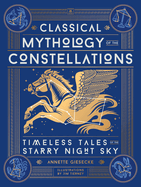
| Publisher: | Black Dog & Leventhal | |
| Genre: | Greece, Ancient, Folklore & Mythology, Science, Space Science, History, Social Science, Astronomy | |
| ISBN: | 9780762488513 | |
| Pub Date: | August 2025 | |
| Price: | $30 |
| Gift Books |
by Annette Giesecke, illust. by Jim Tierney
Many stargazers can identify the bear-shaped constellation known as Ursa Major or spot Orion's famous belt in the night sky, but who exactly was Ursa Major, and why is Orion's belt so recognizable? Annette Giesecke (Classical Mythology A to Z) answers these questions and so many more in Classical Mythology of the Constellations. Teaming up again with illustrator Jim Tierney, Giesecke features the 48 constellations first identified nearly 2,000 years ago by the ancient Greek astronomer Ptolemy, as well as 40 constellations added centuries later to his original list. The myths behind each constellation are credited to a "synthesis of the best-known versions... a range of voices from classical antiquity," a recognition of the time-honored oral traditions that passed stories from the Bronze Age forward to modern times.
Amateur and experienced astronomers alike are sure to appreciate the direction given for both reading and mapping the heavens, and history lovers will delight in this decadent illustrated guide to the night sky--and the stories that live in the stars. --Kerry McHugh
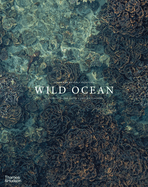
| Publisher: | Thames & Hudson | |
| Genre: | Photography, Nature, Ecosystems & Habitats, Oceans & Seas, Animals, Underwater, Subjects & Themes, Marine Life | |
| ISBN: | 9780500030530 | |
| Pub Date: | October 2025 | |
| Price: | $65 |
| Gift Books |
by Peter Pickford, Beverly Pickford
Wildlife photographers Peter and Beverly Pickford describe their visually stunning Wild Ocean, the follow-up to Wild Land, as "our appeal to you to open your heart to the sea." The book captures four years of fieldwork. The scale alternates between the dramatic and the intimate; sweeps of clouds and immense icebergs intermingle with close-up portraits of coastal and marine creatures. Birds and fish appear singly or mass in impressive formations. The colors pop in striking compositions, such as a purple basslet cutting left across brown corals. Iguanas are perfectly camouflaged on rocks in the Galápagos; king penguins carpet South Georgia Island north of Antarctica. Chapters are divided by ocean and region. Lesser-known locales include the Forgotten Islands of Indonesia and Cocos Island National Park, a protected area off of Costa Rica. The Pickfords' adventures also included an extended vigil to find a crocodile in Cuba. Heading each chapter are a few-page introduction and thumbnail images giving captions and location information so that the photographs can speak for themselves on subsequent pages. It's a spectacular tour. --Rebecca Foster, freelance reviewer, proofreader, and blogger at Bookish Beck
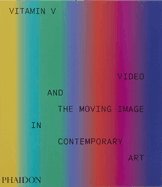
| Publisher: | Phaidon Press | |
| Genre: | Art, 20th & 21st Century, Digital, History, Film & Video | |
| ISBN: | 9781838668730 | |
| Pub Date: | April 2025 | |
| Price: | $69.95 |
| Gift Books |
by Phaidon
One can't help admiring a publishing house that names a series on trends in contemporary art after nutrients that are essential for good health. Vitamin V, the first from Phaidon's Vitamin series on modern-day artists, focuses on video artists who use moving images as a form of protest and to foreground questions of identity. This volume with ample photographs showcases the work of more than 100 creators from around the world. Mixed among the famous names--such as South Africa's William Kentridge, whose "versatile practice often centers on themes of apartheid, colonialism, oppression, cultural trauma, and other political-historic processes and legacies"--are lesser-known creators, such as Morocco's Meriem Bennani, who "approaches current global crises with sophisticated formal innovation, embodied intimacy, and laugh-out-loud humor," as in 2 Lizards (2020), in which the animated leads "wander through an abandoned Times Square, discuss potential viral exposures, and express feelings of loneliness in times of quarantine." Struggling to find a gift for someone who celebrates Indigenous, queer, and other historically marginalized populations? Problem solved. -- Michael Magras, freelance book reviewer
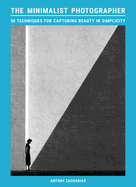
| Publisher: | Laurence King | |
| Genre: | Photography, Techniques, General, Subjects & Themes, Lifestyles, Individual Photographers | |
| ISBN: | 9781399624848 | |
| Pub Date: | July 2025 | |
| Price: | $21.99 |
| Gift Books |
by Antony Zacharias
Whether for an aspiring or accomplished, amateur or professional photographer, Antony Zacharias's striking The Minimalist Photographer: 50 Techniques for Capturing Beauty in Simplicity is a superb guide to creating emotionally compelling images. Informative instructions provide an aesthetic approach to the "use of simplicity to distill the visual narrative." At its core, minimalism is based on the Zen philosophy of essentialism. Above all else, that means "mindfulness." For Zacharias, that means utilizing four key elements: composition; light, color, and contrast; creative techniques; and storytelling. These precepts are displayed in more than 40 glossy examples in black and white or vivid color. Many are by Zacharias; other photos include Murray Fredericks's evocative dancing flames engulfing a tree; Philippe Halsman's soaring diver; and Edward Steichen and Dorothea Lange classics. Every page is a valuable lesson in perception: removing distractions, embracing negative space, generating dynamic tension, absorbing patterns, engaging narrative possibilities. All of which leads to a seductive "hypnotic reduction in clarity" and creativity. The Minimalist Photographer is an ideal gift to encourage seeing the world anew and capturing its grace. --Robert Allen Papinchak, freelance book critic
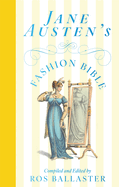
| Publisher: | Macmillan Collector's Library | |
| Genre: | Biography & Autobiography, Design, Women Authors, Non-Classifiable, Textile & Costume, Fashion & Accessories, Fashion, Social History, History, Literary Collections | |
| ISBN: | 9781035049127 | |
| Pub Date: | October 2025 | |
| Price: | $24.99 |
| Gift Books |
by Ros Ballaster, editor
This gold-beribboned, elegantly designed paper-over-board edition of Jane Austen's Fashion Bible is perfect for fashion buffs, Austen fans, and even The Gilded Age enthusiasts. It offers 21 full-color fashion plates from La Belle Assemblée, a monthly magazine launched two months after Jane Austen's 30th birthday. Ros Ballaster, a professor of 18th-century studies, artfully links each plate to an excerpt from one of Austen's works or letters, along with the magazine's original "explanation" of the fashion. The duplicitous widow of Lady Susan provides the excerpt for a "Mourning Evening Full Dress." "Hyde Park Walking Dresses" illustrate the scene of the Dashwood sisters' arrival at Barton Cottage in Sense and Sensibility (along with a description of global influences on the style, such as a Spanish spencer, French cambric, Chinese silk). A Circassian corset appears with a shapely rose-colored velvet "Morning Walking Dress" of the type Elizabeth Bennet might have worn in Pride and Prejudice.
Devotees of Austen's characters will cherish the chance to see what they might have worn; novices will appreciate this sampling of her writing--from both famous and unpublished works. --Jennifer M. Brown
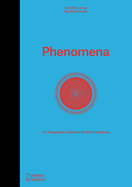
| Publisher: | Thames & Hudson | |
| Genre: | Design, Life Sciences, Earth Sciences, Graphic Arts, Illustration, Reference, Science, General | |
| ISBN: | 9780500028650 | |
| Pub Date: | March 2025 | |
| Price: | $39.95 |
| Gift Books |
by Camille Juzeau
Ever want a quick, visual explanation of far-rangling topics from anthropology to zoology? In Camille Juzeau and design studio the Shelf Company's Phenomena: An Infographic Guide to Almost Everything, vibrantly and boldly imaged infographics give readers a crash course on content such as dinosaur size, space pollution, permafrost, the history of yoga, Ovid's The Metamorphoses, and the chemistry of love. The eye-catching, full-page diagrams accompany short informative texts that provide interesting, conversation-provoking overviews. To resist the heaviness of a textbook, the topics are loosely organized, allowing for a free-thinking approach to new information--deep-sea exploration, for example, finds itself next to the world's tallest buildings, and a page on snail shells faces one on mobile homes. There are helpful guides for easy navigation at the end of the book: a list of topics and a further list of subject fields. This coffee-table book is meant to be opened frequently and randomly, and can be explored alone or with others; Phenomena achieves a skillful balance between teaching and entertaining. --Michelle Anya Anjirbag, freelance reviewer
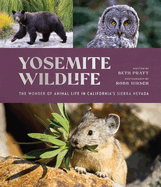
| Publisher: | Yosemite Conservancy | |
| Genre: | Nature, Natural History, Science, Subjects & Themes, Mountains, Photography, Life Sciences, Ecosystems & Habitats, Animals, Environmental Conservation & Protection, Wildlife, General, Endangered Species, Plants & Animals, Zoology - General | |
| ISBN: | 9781951179267 | |
| Pub Date: | October 2025 | |
| Price: | $60 |
| Gift Books |
by Beth Pratt, Robb Hirsch
Environmental leader and lifelong Yosemite lover Beth Pratt partners with biologist and wildlife photographer Robb Hirsch to offer Yosemite Wildlife: The Wonder of Animal Life in California's Sierra Nevada, the first book in 100 years to address this national gem's diverse animal wildlife. With more than 300 images, Yosemite Wildlife is also rich in Pratt's accessible prose; this thorough survey of observations and storytelling is designed to update a 1924 publication for the historical record. As a beautifully produced, large-format, glossy presentation, it also exhibits Pratt's and Hirsch's expertise and passion for a place that is much more than just its famous geology and dramatic scenery. With plentiful archival records, historical images, and personal stories from park staff and naturalists, it's an informative document as well as a stunning visual feast.
Conservation success stories and profiles of Yosemite's human defenders over the years accompany Hirsch's sumptuous images of the iconic black bear and mule deer, the Sierra green sulphur butterfly, the northwestern pond turtle, raptors and songbirds, dragonflies and butterflies, charismatic predators, shy shrews, quirky herptiles, and more. Exquisite. --Julia Kastner, blogger at pagesofjulia

| Publisher: | Black Dog & Leventhal | |
| Genre: | Women, Biography & Autobiography, Women Authors, Literary Criticism, Folklore & Mythology, General, History, Social Science | |
| ISBN: | 9780762488704 | |
| Pub Date: | August 2025 | |
| Price: | $30 |
| Gift Books |
by Jane Harrington
Women of the Fairy Tale Resistance: The Forgotten Founding Mothers of the Fairy Tale and the Stories That They Spun is a stunning hardcover, filled with enchanting, full-color illustrations by Khoa Le. Jane Harrington (In Circling Flight) shares the forgotten stories of a group of 17th-century Parisian women writers, the conteuses, whose contributions have since been overshadowed by figures such as Charles Perrault and the Brothers Grimm.
The book combines biographies of seven of these writers--including Marie-Catherine d'Aulnoy, who is credited with "start[ing] the fairy tale craze"--with retellings of 13 of their fairy tales, including stories such as "Belle-Belle", which has elements that may have gone on to inspire the popular classic "Beauty and the Beast." Each chapter contains vibrant, painted vignettes and evocative scenes from the featured stories.
Using their tales to advocate for female empowerment and to fight against the tyrannical monarchy of Louis XIV, the conteuses portrayed their heroines as strong protagonists, capable of independent thought and agency.
Harrington is a lively and astute researcher, ensuring that Women of the Fairy Tale Resistance educates, entertains, and inspires. --Grace Rajendran, freelance reviewer
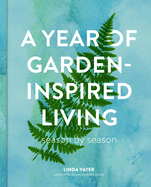
| Publisher: | Cool Springs Press | |
| Genre: | Self-Help, Gardening, Flower Arranging, Crafts & Hobbies, Green Lifestyle, Essays & Narratives | |
| ISBN: | 9780760395158 | |
| Pub Date: | October 2025 | |
| Price: | $30 |
| Gift Books |
by Linda Vater, illust. by Briana Kranz
Exemplifying her philosophy that "it is the daily ritualistic little things that set the tone of our lives," Linda Vater (The Elegant and Edible Garden), garden designer and creator of garden-inspired content for multiple media outlets, offers chatty, beautifully illustrated tips in A Year of Garden-Inspired Living. Divided into Wintering, Springing, Summering, and Autumning sections, the book has more than 200 one-page pointers that include creative approaches to home and garden management, gift giving, entertaining, and self-care, each presented as an inviting short story. Jules had seeds but a small yard. Voila! Hollyhocks growing in the alley! Jon's grouping of blue and green wine bottles placed bottoms up in a clay pot form a "bouquet" echoing the colors in his garden, underscoring Vater's commitment to reducing consumption.
This colorful, sprayed-edge hardcover collection lies flat and includes an attached ribbon bookmark, making it perfect to keep close at hand for quick reference. Delicate watercolor drawings by Briana Kranz enhance every page, which end with an encouraging "Why not try?" summary. This homage to living intentionally is sure to inspire. --Cheryl McKeon, Book House of Stuyvesant Plaza, Albany, N.Y.
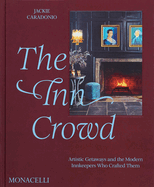
| Publisher: | Monacelli Press | |
| Genre: | Travel, Food, Lodging & Transportation, Subjects & Themes - Regional), Hotels, Inns & Hostels, House & Home, Pictorials (see also Photography, Decorating & Furnishings | |
| ISBN: | 9781580936965 | |
| Pub Date: | October 2025 | |
| Price: | $59.95 |
| Gift Books |
by Jackie Caradonio
As a hotel general manager's daughter, travel photojournalist Jackie Caradonio has always loved staying in hotels. But not just any lodging--she seeks out bed-and-breakfasts that are one of a kind. After discovering that many of these properties have owners with extraordinary passion and vision, Caradonio has collected their stories in the sumptuous The Inn Crowd: Artistic Getaways and the Modern Innkeepers Who Crafted Them, with a foreword by cosmetics mogul Bobbi Brown and her husband, Steven Plofker.
Elegant photographs lounge beside the innkeepers' fascinating accounts of overcoming nearly insurmountable odds to create happy, restful spaces, often with special treats for visitors--like a secret closet containing a generous variety of candy, all complimentary, at Brown and Plofker's the George in New Jersey. Want to sleep in a former castle? Head to Maine and check into the Norumbega Inn, whose Library Suite--with a library on a mezzanine above the bed--is a dream for book lovers. No budget for a vacation? No problem. Just brew a cuppa and get swept away by Caradonio's gorgeous photography. --Elyse Dinh-McCrillis, freelance editor at The Edit Ninja